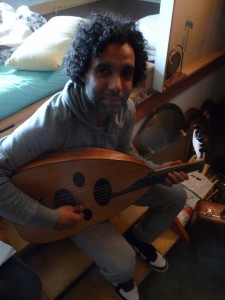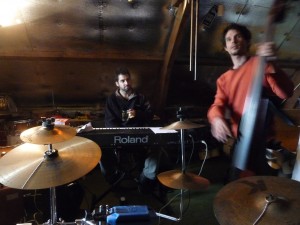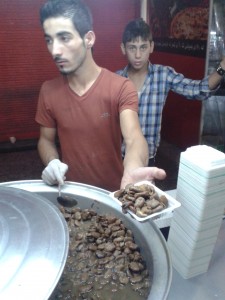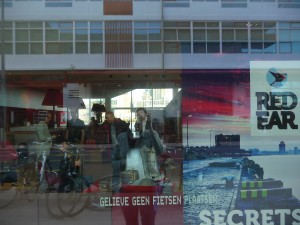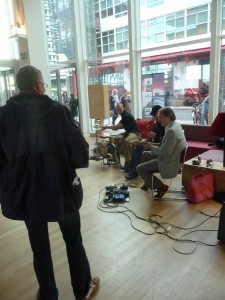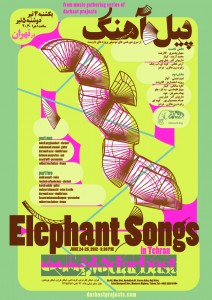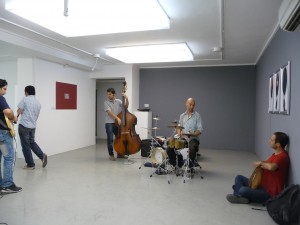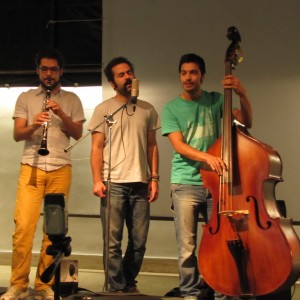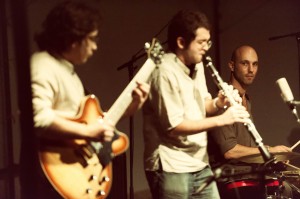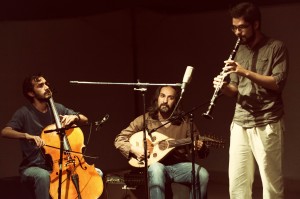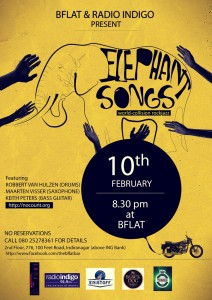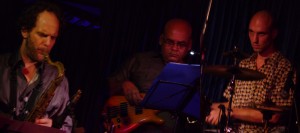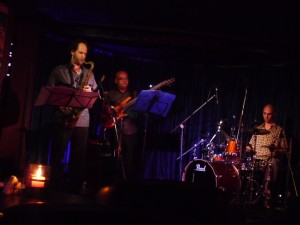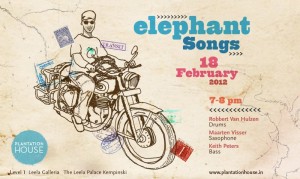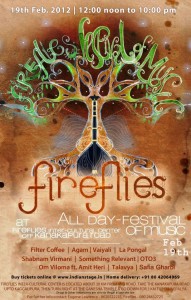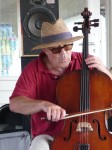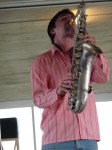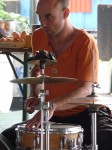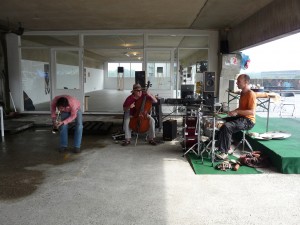It’s unbelievable. You look at the sea. You swim in the sea. You stick your feet wash your hands cool your skin get salty make love get sunburnt in the sea. But then that’s not actually in the sea. It’s more on the sea. In-the-sea is another word for outer-space. There is this funny film – this mirror this membrane this giant ear drum if you will that separates the world as I know it from something of incredible, alien beauty.
A snorkelling trip seemed a good idea, after I spent a few days wondering around Gili Air, Indonesia. Got there when looking for a quiet place to get some work done for a few days after running around on Mount Rinjani. Getting very annoyed with Gili Trawangan, I ended up leaving my hotel room there, booking the next boat to any other island and whiling away the waiting hours eating food that was too expensive and very good. Reading my book on developing skills in musical improvisation by Paul Berliner. Amazing. Very insightful, very thoughtful and thought provoking. And very long winded. Please, mister Berliner, say what you want to say and leave it at that. Makes the whole story a lot clearer and, perhaps surprisingly because leaving out so much evidence and illustration, more informative.
I spent my evenings and a lot of the daytime on reading the book. Walking around the island took a few hours and walking was a great way to get places and get lost. Banana plantations, a village that might have been a compound or someone’s garden, beach beach beach. And tourist restaurants. All selling the same stuff and all at least acceptable. No jack fruit curry though, contrary to the menu of a cosy little beach place I sat down in with high hopes. Ended up in a fancy place further up (or down?) the beach, eavesdropping on conversations of diving instructors.
After contemplating booking the snorkelling tour with the same happy player of a broken guitar that I booked my transport to the airport a day after with, I ran into … no idea of his name anymore. Grr. Dutch guy who lived in Australia since years, with an Australian lady and their children. Or was it New Zealand. Huub, I think he was called. Bought five euros worth of rupees from him a while later. (Being able to eat at airports is important.) Huub told me about the amazing snorkelling right off the beach, and added that that was principally where the trips were going. Also another place just like it, and a place where the big turtles live. But: there are turtles here too! He saw one just a while before.
The next day I rented flippers and a diving mask and snorkel from the friendly guy who all of a sudden charged five thousand rupees more than what he quoted before – and not only him, it turned out, and not only to me. Apparently, a step up on the tourism calendar hierarchy that day. Still, he seemed quite happy with my advance of twenty and never mentioned the remainder again.
I walked up the beach to the corner, where the island turns left. One of the curves in the island, just north of the fancy tourist area. (As distinguished from the easy-going, the hippie, and the posh beaches.) Put my costume on, and stuck my head under water. Nice. Sea floor with plants, very shallow but friendly. Reminds me of looking under water in Switzerland when I was little (with the diving mask I had worn to a restaurant dinner the day I had bought it). And then the floor dips down and nothing is similar to anything you’ve seen. To quote Ewan McGregor, I felt like I was in National Geographic, I was National Geographic! Different world. Different light. Kind of hushy dark blue, very clear in a foggy way. It’s not that it’s unclear, but you still can’t see very far. Sunlight filtering in. And reflecting off of everything that lives there… Different breath. Breathing only through your mouth, with a rasp that keeps getting stronger until you realise you have to take the water out of the snorkel. Breathing deeply is difficult, something I always find difficult in water. The reason why I still can’t crawl in the water, and failed miserably at a diving lesson years ago. Just don’t know how to breath out. Panic breath in panic breath in PANIC BREATH IN. Exhaling is not on the menu. With a snorkel it’s a lot easier though, and it’s fantastic to finally relax and let the breathing take over, let it happen on its own without worrying about it.
Different sound under the water surface too. Muffled, and reverby. Or resonant, rather. Tiny pinpricks of bubble sound. The whoosh of flippers, delayed. Different physique. Being horizontal is cool. Being able to keep your neck long, into the back of your head, and have your head looking straight down, is fantastic because you can totally relax and breath and be active at the same time, the relaxation making you stronger.
And while floating and propelling yourself into this deep blue world of sci-fi sound and movement that may be very primal for us (after all, some of us believe our species lived in the sea for a while and their evidence seems credible), you meet Nemo and all his friends. I didn’t have my motorbike licence yet, but I was the Motorcycle Boy. Only I hadn’t known till then that this is in a different category of colour management. Unbelievable combinations of purple blue orange red yellow silver and all kinds of other shades and hues I never knew existed. And all shiny and contrasting and complementing and making that world somehow so coherent and so independent.
I went three times, with a little break after the second time. In which I sold a book (given to me by Tessel thirteen years before, I took a picture of what she wrote in it) and kept the two tens in my pocket while going the third time. My ignoring the slighly hot feeling on the skin of my back led to a very welcomed aloe vera treatment the next day, when my lobster skin didn’t enjoy the backpack. Leaving the island, leaving Lombok and Rinjani, and a few hours later flying away fom the airport of Jakarta with its Starbuck’s, where they take credit cards and provide wifi, and the usual airport bookshop.
